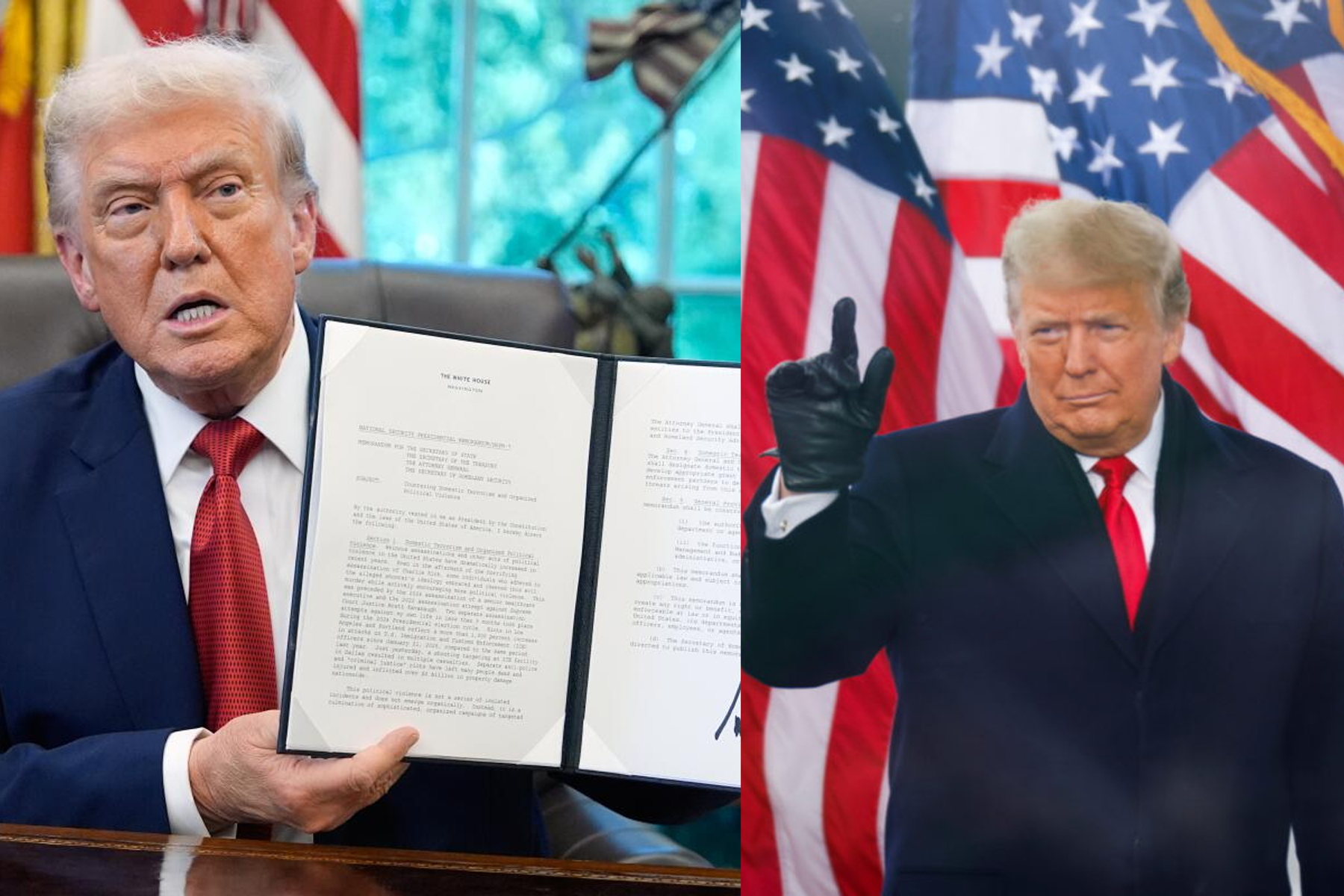The United States is not a fascist state. Elections still occur, courts still sometimes check executive power and journalists and comedians still speak out against the government. Within the remains of a democratic framework, on Sept. 22, President Donald J. Trump signed an executive order designating “Antifa” — a composition of autonomous groups affiliated with political movements against fascism and other far-right extremist ideologies — as a domestic terrorist organization. Despite the lack of legal framework for this designation, the executive order purports that dissent against the Trump administration is a threat to national security rather than a legitimate democratic right.
The executive order calls Antifa a “militarist, anarchist enterprise” bent on overthrowing government and law enforcement through violence, intimidation and doxing. It accuses the movement of coordinating riots, armed standoffs and assaults on ICE, while concealing its membership and financing. Based on these claims, the order directs federal agencies to “investigate, disrupt, and dismantle” Antifa’s operations, including efforts to cut off funding and prosecute those who provide “material support.”
The order is legally dubious, since the U.S. has no statutory mechanism to designate domestic groups as terrorist organizations in the same way the State Department lists foreign ones. However, critics warn that since Antifa is not a formal, centralized entity but rather a loosely connected movement, the vague language around “acting on behalf of Antifa” risks criminalizing protest and speech. While the order emphasizes it must be implemented “consistent with applicable law,” its open-ended directives raise the prospect of selective enforcement, politicized prosecutions and a major effort to silence political dissent.
This order was then followed by a National Security Presidential Memorandum (NSPR), issued on Sept. 25, titled “Countering Domestic Terrorism and Organized Political Violence.” The NSPR claims, the recent “assassination of Charlie Kirk,” the “2024 assassination of a senior healthcare executive,” the “2022 assassination attempt against Supreme Court Justice Brett Kavanaugh,” the “two separate assassination attempts against [Trump]” during his 2024 election campaign as well as the 2025 “riots in Los Angeles and Portland [against] U.S. Immigration and Customs Enforcement (ICE)” are “not a series of isolated incidents and [did] not emerge organically.” Rather, they are a “culmination of sophisticated, organized campaigns of targeted intimidation, radicalization, threats, and violence.”
This is a bold claim to make when — as of Sept. 27 — there have been no individuals found guilty of the murder of Charlie Kirk nor the senior healthcare executive, let alone confirmations regarding their motives or political affiliations. The demonstrations against ICE are protected under the First Amendment as a right to “petition the Government for a redress of grievances.” As well, when listing the recent alleged acts of political violence, the NSPR conveniently leaves out the shootings of two Minnesotan democratic lawmakers and their spouses.
Trump’s actions have exceeding parallels with fascist states in 20th century Europe, states which are a good reminder that fascism does not arrive all at once, but one small step at a time — vilifying opponents, suppressing culture and criminalizing protest — to pave the way for larger horrors.
For example, in the aftermath of Charlie Kirk’s assassination, Trump and allied media figures elevated him as a “martyr for freedom,” using his death as both rallying point and political weapon. In similar fashion, the Nazi Party mythologized Horst Wessel — a minor party activist killed in 1930 — as a national martyr, turning his funeral song into a propaganda anthem.
Following Kirk’s death, any commentary regarding Kirk — that the Trump administration perceives as critique or insensitive — has been met with outsized backlash. Late-night host Jimmy Kimmel was temporarily suspended after his commentary on Kirk’s death. Earlier this year, Stephen Colbert’s Late Show was canceled by CBS only days after he criticized Trump in connection with a $16 million settlement involving Paramount, sparking accusations of retaliation and self-censorship. Trump himself has repeatedly vilified critical media outlets as “fake, fake disgusting news” and recently voiced that “maybe” TV networks who speak against him should have “their license […] taken away.” These are the same first steps taken in Benito Mussolini’s Italy, where the leggi fascistissime of 1925-26 gradually outlawed opposition parties, censored the press and criminalized dissent, laying the groundwork for dictatorship.
The media censorship is also very prevalent in what major media outlets are — or are not — covering. Despite widespread mobilization, many U.S. protests have been marginalized or erased by major media outlets. The nationwide “50501” demonstrations, for example, have been given very limited media coverage from major U.S. networks. At the same time, activists have had to disguise ongoing demonstrations as 2025 *insert US city* “music festivals” on social media to bypass algorithmic suppression.
To be clear, the United States is not yet a fascist state, nor is this article claiming it to be. Elections remain competitive, courts have issued rulings against the administration and comedians, journalists and activists continue to criticize those in power — even under mounting pressure. These guardrails matter and they distinguish the U.S. today from Mussolini’s Italy after the leggi fascistissime or Hitler’s Germany after the Reichstag Fire Decree, when checks on power collapsed almost overnight. Yet, history warns that such protections are fragile: when leaders vilify dissenters, glorify martyrs and erase opposition, the institutions meant to preserve democracy can quickly erode.
By designating Antifa as a “domestic terrorist organization” without any statutory basis, the administration has effectively redefined resistance itself as a threat. This echoes Mussolini’s Italy, where opposition was branded “subversion,” and Hitler’s Germany, where anti-Nazi organizing was outlawed long before the totalitarian state was complete. To turn opposition into the enemy is not a sign of democratic strength but of democratic fragility — a way of hollowing out freedom while insisting it is being defended. America is not a fascist state now, but the trajectory of the current administration has uncomfortable parallels.

